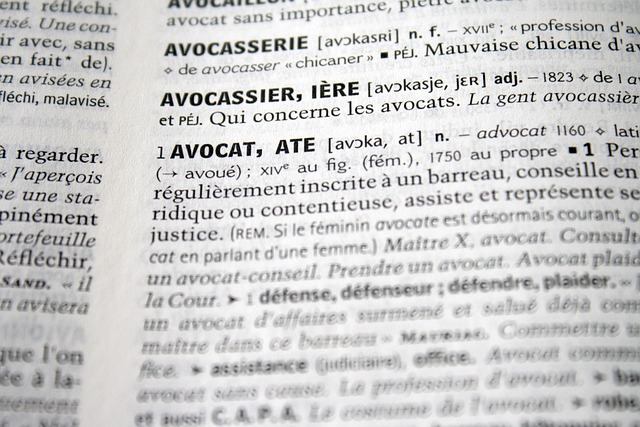Whistleblower Protection Laws safeguard individuals exposing illegal activities within organizations by providing a clear litigation path, protecting them from retaliation and ensuring privacy. Understanding these regulatory law litigation stages is crucial for fostering transparency and ethical conduct in businesses. The process involves identifying violations, gathering evidence, consulting legal counsel, filing complaints or private litigation, and preserving documentation. Navigating complex dynamics ensures robust legal strategies and favorable outcomes in high-stakes situations. Post-trial considerations include appeals and enforcement mechanisms, with jurisdiction-specific laws offering retaliation protections. Experienced attorneys guide clients through these stages to secure positive outcomes.
Whistleblower protection lawsuits play a crucial role in upholding ethical conduct within organizations by safeguarding individuals who expose illegal or unethical activities. This article guides you through the understanding of whistleblower protection laws, from defining these legal safeguards to initiating legal action and navigating potential challenges. We explore the litigation stages, including judgment and post-trial implications, offering insights into the complex world of regulatory law.
- Defining Whistleblower Protection Laws
- Initiating Legal Action: Steps Involved
- Navigating Litigation Challenges and Defenses
- Judgment and Post-Trial Implications
Defining Whistleblower Protection Laws

Whistleblower Protection Laws are regulatory measures designed to safeguard individuals who expose illegal or unethical activities within their respective businesses or organizations. These laws offer a crucial framework for understanding the litigation stages involved in such cases, providing a clear path for whistleblowers to seek justice and ensure accountability.
By navigating all stages of the investigative and enforcement process, these protections aim to prevent retaliation and enable complete dismissal of all charges against the whistleblower. This includes protecting them from adverse employment actions, ensuring their privacy, and supporting their role in exposing wrongdoing. Such laws foster a culture of transparency and ethical conduct, encouraging employees to come forward with valuable insights without fear of reprisal.
Initiating Legal Action: Steps Involved

Initiating legal action under whistleblower protection laws involves a strategic approach that navigates complex regulatory landscapes. Understanding the various litigation stages is crucial for achieving extraordinary results in defense of whistleblowers. The process begins with identifying violations, gathering compelling evidence, and consulting with experienced legal counsel who specialize in general criminal defense. This initial phase demands meticulous attention to detail, as it sets the foundation for subsequent legal maneuvers.
Once a whistleblower has gathered sufficient proof, he or she can file a complaint with relevant regulatory agencies or initiate private litigation. The former involves notifying authorities about the suspected violation, while the latter requires crafting and filing a well-structured lawsuit. Throughout these stages, it’s vital to maintain thorough documentation, preserve evidence, and remain compliant with legal procedures. This meticulous approach ensures that the whistleblower’s rights are protected and that any potential defense strategies are maximized.
Navigating Litigation Challenges and Defenses

Navigating the legal landscape surrounding whistleblower protection lawsuits requires a deep understanding of regulatory law and its intricate litigation stages. Each step demands meticulous attention to detail, from identifying the applicable laws and regulations to constructing a robust case strategy. Whistleblower cases often present unique challenges, as they involve delicate issues of public interest and employee rights.
Plaintiffs must carefully consider their options, including whether to pursue a general criminal defense or explore alternative strategies that could lead to a complete dismissal of all charges. The complexity increases with potential defenses raised by defendants, such as arguing the disclosure of information was not protected or that the whistleblower’s actions caused undue harm. Understanding these dynamics is key to crafting an effective legal strategy and ultimately achieving a favorable outcome in these high-stakes cases.
Judgment and Post-Trial Implications

After a successful whistleblower lawsuit, understanding the judgment and its post-trial implications is crucial for navigating the legal landscape. The outcome can have far-reaching effects, shaping future regulatory law litigation stages across the country. Depending on the case’s specifics, individuals who expose wrongdoing may be entitled to damages, injunctions, or other equitable remedies. These awards aim to compensate whistleblowers for their efforts and deter future misconduct by companies engaging in fraudulent or illegal activities.
The post-trial phase involves various considerations, including appeals processes and enforcement mechanisms. Whistleblower protection laws vary across jurisdictions, but many offer protections against retaliation during the lawsuit and afterward. However, ensuring that these protections are effectively implemented often falls on the shoulders of experienced white-collar defense attorneys who can guide clients through the complexities of regulatory law litigation stages, ultimately helping to avoid indictment and secure a just outcome.
Whistleblower protection lawsuits play a pivotal role in ensuring accountability within organizations, especially regarding regulatory violations. By understanding the defining laws and navigating the litigation stages, individuals can uphold their rights while exposing wrongdoing. Familiarizing oneself with the initiation process, potential challenges, and post-trial implications is essential for those considering legal action. Through this knowledge, whistleblowers can contribute to a transparent and compliant corporate landscape.






